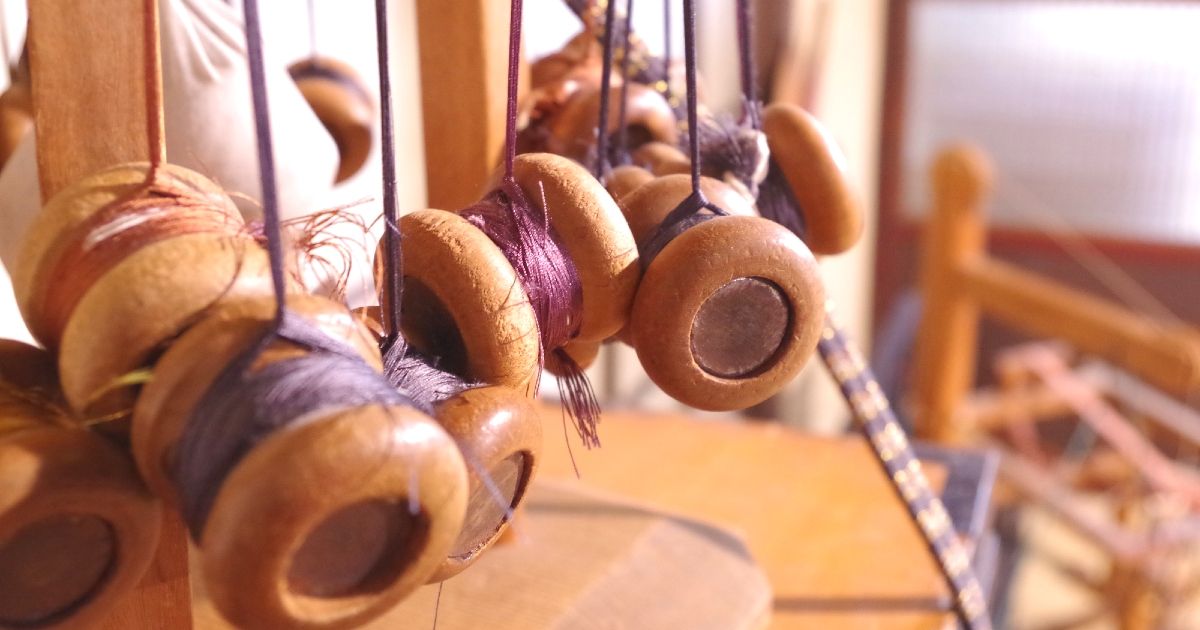When is the Jidai Matsuri? What kind of festival is it and when did it start?
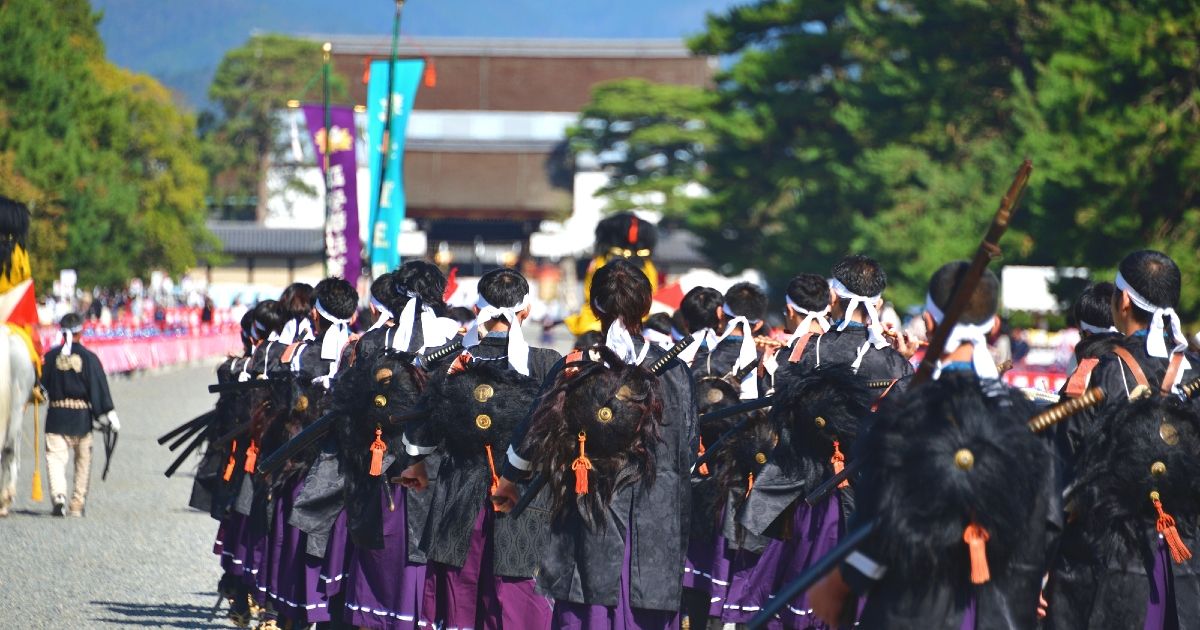
Kyoto The " Festival of the Ages " Featured!
The Jidai Festival is on par with the Aoi Festival and the Gion Festival. One of Kyoto's three major festivals . Kyoto Heian Shrine Grand Festival is.
When did the Jidai Matsuri begin? Its history and origins , Why it will be held in Kyoto on October 22nd " What kind of festival is it? We will explain these and other topics in an easy-to-understand manner!
In addition Highlights of the Jidai Festival I will also share some tips, so please use them as a reference and enjoy!
table of contents
- 1 What is the Jidai Matsuri? What kind of festival is it?
- 2 Jidai Matsuri Course/Route | Time & Schedule
-
3
Jidai Matsuri Procession Order and Formation
- 3.1 Order of the Jidai Matsuri procession: 1. Honorary Magistrate
- 3.2 Order of the Jidai Matsuri procession: 2. Meiji Restoration era
- 3.3 Order of the Jidai Matsuri procession: 3. Edo period
- 3.4 Order of the Jidai Matsuri procession: 4. Azuchi-Momoyama period
- 3.5 Order of the Jidai Matsuri procession: 5. Muromachi period
- 3.6 Order of the Jidai Matsuri procession: 6. Yoshino Period
- 3.7 Order of the Jidai Matsuri procession: 7. Kamakura period
- 3.8 Order of the Jidai Matsuri procession: 8. Fujiwara period
- 3.9 Order of the Jidai Matsuri procession: 9. Enryaku period
- 4 Highlights of the Jidai Festival
- 5 Enjoy the Jidai Festival!
- 6 Feature articles recommended by the editorial department
What is the Jidai Matsuri? What kind of festival is it?
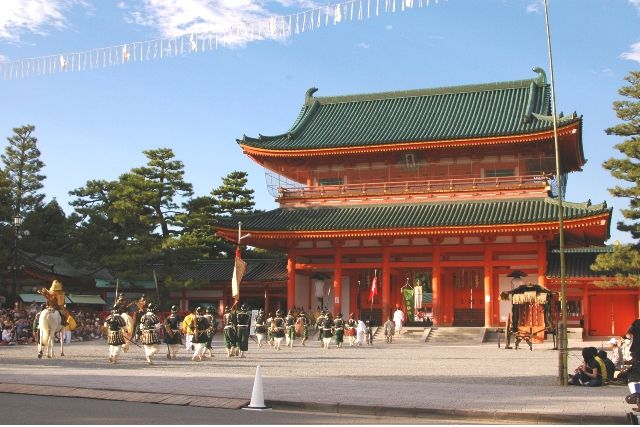
First" What kind of festival is the Jidai Matsuri? " We will explain it in an easy-to-understand manner!
What is the Jidai Matsuri? When did it start?
In 1868 (Keio 4), it became the capital. Tokyo surrendered to Kyoto After that, a vigorous campaign was launched to attract the museum to Kyoto, with the aim of "bringing vitality to Kyoto, where the capital had been moved to Tokyo." The 4th Domestic Industrial Exposition was held in Kyoto in 895 (Meiji 28). It was done. Heian Shrine Numerous pavilions were set up in the Okazaki area, where the shrine was founded, and the exhibition was a great success.
In the autumn of the same year, 1895 (Meiji 28), a festival and ceremony was held to commemorate the 1,100th anniversary of the capital's relocation to Heian. And on the last day A procession of period customs This became the current Jidai Matsuri.
The spirits of Emperor Kanmu and Emperor Komei, riding in a Gohoren (shrine), will be able to see the peace, prosperity and evolution of Kyoto city. That is the purpose of the queue.
What kind of festival is the Jidai Matsuri? What era does it take place in?
Approximately 2,000 citizens participated in the Jidai Matsuri, which depicted historical periods from the Meiji Restoration to the Enryaku period (782-806), when Heian-kyo was built. They parade through Kyoto dressed in costumes from different eras. .
The order of the procession is distinctive in that it begins with the new Meiji Restoration and goes back to the older Enryaku period.
.
Finally, the procession of the Gohoren palanquin and the Kyusen group of archers are organized in that order.
Why the Jidai Festival is held on October 22nd
Many people may wonder why the Jidai Matsuri is held on October 22nd every year.
So Why the Jidai Festival is held every year on October 22nd We will explain:
As mentioned above, in the autumn of 1895 (Meiji 28), a memorial festival and ceremony was held to commemorate the 1100th anniversary of the transfer of the capital to Heian. A procession of period customs This became the current Jidai Festival.
The first festival was held on October 25th, but the following year, in 1896 (Meiji 29), it was changed to October 22nd, the day Emperor Kanmu's chariot (shaga: car or vehicle) entered the new capital. Since then, October 22nd It is customary for this to be done in
Festivals held at the Jidai Matsuri
| Date and Time | Name of the ceremony | Content of the ceremony |
|---|---|---|
| October 15 | Festival of the Times Declaration Ceremony | At 1:30 p.m., about 500 people selected as the main participants in the procession pray for the safe execution of the procession at Heian Shrine. After the ceremony, each person is presented with a letter of appointment by the chief priest. |
| October 21st | The Day Before the Jidai Festival | 10:00am: Pray at Heian Shrine for the next day's ceremonies and the safety of all attendees. |
| October 22nd | Festival of the Ages | At 7:00 p.m., the president and magistrate of the Heian Kosha will attend the ceremony at Heian Shrine, and the president will recite a memorial service on behalf of the Heian Kosha. |
| October 22nd | Shinko Festival | At 8:00, the spirits of the deceased are transferred to two Imperial palanquins, and at 9:00, the Shinko Procession is organized and departs from Heian Shrine. It arrives at the Imperial Palace in front of the Kenreimon Gate at around 10:00. |
| October 22nd | Gyozaisho Festival | 10:30 a.m. Representatives of worshippers and citizens attend the ceremony at the Imperial Palace in front of the Kenreimon Gate. The Shinsen Kosha (Kyoto Cooking Association) offers sacred food (food and sake offered to the gods), and Shirakawame offers flowers. |
| October 22nd | The procession begins | 12:00 Depart from Kyoto Imperial Palace, Kenreimon Gate |
| October 22nd | Daigokuden Festival and Return Festival | 16:00 After the entire procession arrives at Heian Shrine, the Imperial Pavilion is enshrined at the Daigokuden. A third-ranked official from the Enryaku Civil Officials' Court Procession recites a rite of passage. The sacred spirit is transferred from the Imperial Pavilion to the main hall, and the ceremony ends. |
| October 23 | Festival of the Era Afterwards | 10:00 At the end of the ceremony at Heian Shrine, the ritual implements are put away and stored. |
Jidai Matsuri Course/Route | Time & Schedule
It takes about 2 hours to go through the procession.
*The time is subject to change due to scheduling.
Jidai Matsuri Procession Order and Formation
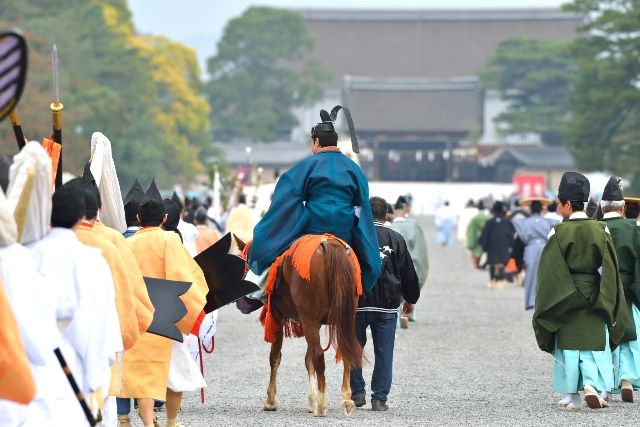
The main event of the Jidai Festival is
Period customs procession
!
For those who want to see the Jidai Matsuri
Order and organization of the procession
If you learn this, you'll have more fun!
Order of the Jidai Matsuri procession: 1. Honorary Magistrate
The following people will be joining the queue:
- Governor of Kyoto Prefecture
- Mayor of Kyoto
- Speaker and Vice-Chairman of the Kyoto City Council
- Chairman of the Jidai Festival Support Association
- Chairman of the Kyoto Chamber of Commerce and Industry
- Jidai Festival Flag
- Chief Magistrate
Order of the Jidai Matsuri procession: 2. Meiji Restoration era
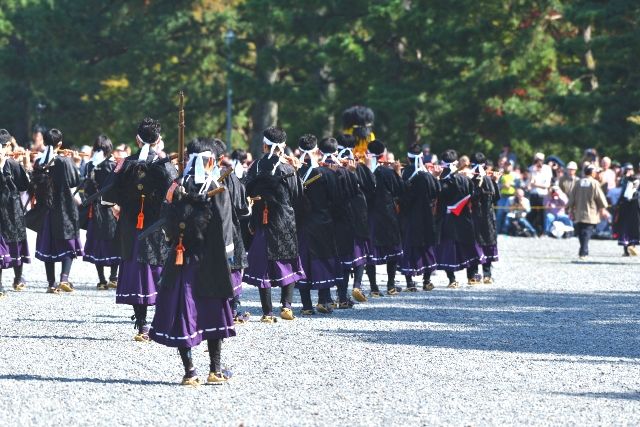
・Meeting of the Meiji Restoration Loyalists : Its origins lie in the Yamagunitai (farmers' corps) which was made up of people from Yamaguni Village, Kitakuwada County, Tanba Province (Keihoku, Ukyo Ward, Kyoto City). The marching band is led by a fife and drum corps.
・Procession of Patriots at the End of the Edo Period The following patriots who were active during the Meiji Restoration are featured.
- Katsura Kogoro
- Yoshinosuke Saigo
- Ryoma Sakamoto
- Shintaro Nakaoka
- Takasugi Shinsaku
- Yoshida Shoin
- Torataro Yoshimura
- Mikisaburo Rai
- Umeda Unpin
- Sanai Hashimoto
- Tadahiro Konoe
- Kintomo Anekoji
- Sanjo Sanetsumu
- Nakayama Tadayasu
- Kuniomi Hirano
・The Fall of the Seven Lords : Depicts the scene when seven nobles were exiled from Kyoto after their plot to overthrow the shogunate was defeated.
- Court noble Sanjo Sanetomi
- Court noble Sanjō Nishisuetomo
- Court noble Higashikuze Michitomi
- Court noble Mibu Motonobu
- Court noble Takauta Shijo
- Court noble Nishikikoji Yorinori
- Nobleman Nobuyoshi Sawa
- Izumi Maki, the Patriot
- The Patriot Genzui Kusaka
Order of the Jidai Matsuri procession: 3. Edo period
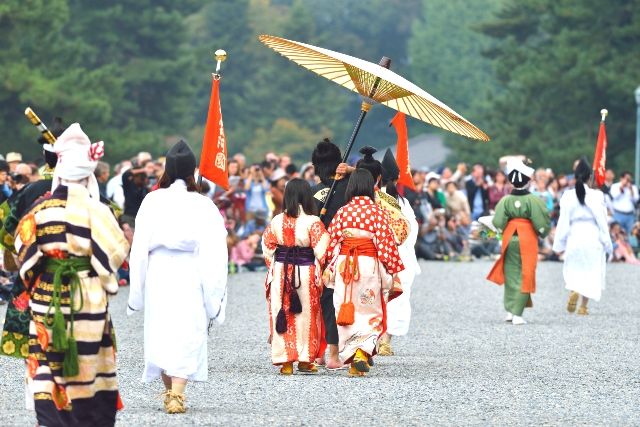
・Tokugawa Castle Envoys Procession to Kyoto A reproduction of the procession of feudal lords sent by the Edo Shogunate as representatives of the Shogun for important ceremonies in Kyoto, such as the enthronement ceremony and the New Year's visit.
・Edo Period Women's Procession :The following people will be recreating hairstyles and fashions worn by women during the Edo period.
- Kazunomiya
- Otagaki Rengetsu
- Nakamura Kuranosuke's wife
- Gyokuran
- Kaji
- Yoshino Tayuu
- Izumo no Okuni
Order of the Jidai Matsuri procession: 4. Azuchi-Momoyama period
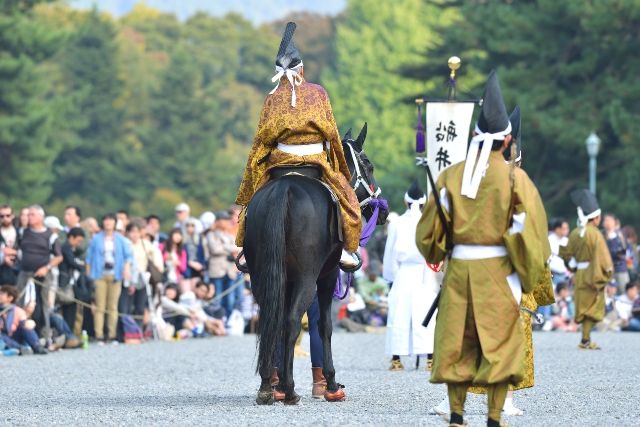
・Toyotaka Procession to Visit the Emperor
: Depicts Toyotomi Hideyoshi and his entourage traveling from Fushimi Castle to the Imperial Palace on the occasion of Toyotomi Hideyori's coming-of-age ceremony.
・Oda's Procession to Kyoto
: A recreation of the time when Oda Nobunaga traveled to Kyoto (from the provinces) in 1568 (Eiroku 11) with the aim of unifying the country. The following warlords appear:
- Oda Nobunaga
- Hideyoshi Hashiba
- Niwa Nagahide
- Kazumasu Takigawa
- Katsuie Shibata
Order of the Jidai Matsuri procession: 5. Muromachi period
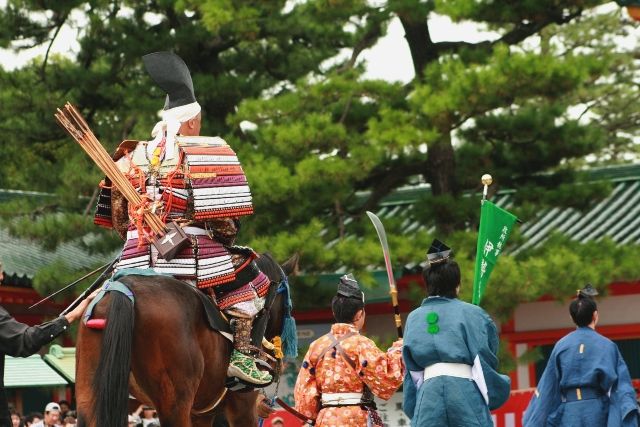
・Procession of the Muromachi Shogunate Government The Ashikaga Shogun riding on horseback wears a light outfit of kogusoku (small armor) and a gold brocade costume. The main clans follow as attendants. Another highlight is the unique people who take part in the procession, such as nobles, law court officials, doctors, and physicians.
・Procession of the Customs and Manners of the Muromachi Period : A reenactment of the "Furyu Odori" dance that was popular among the townspeople of Kyoto. At the time, only men participated, and they dressed up in outlandish costumes and flashy outfits of their wives and daughters.
Order of the Jidai Matsuri procession: 6. Yoshino Period

・Procession of Lord Kusunoki to Kyoto : Depicts the procession of Kusunoki Masashige's family, who led Emperor Go-Daigo to Kyoto on his return in 1331 (Genkō 1).
・Medieval Women's Procession The parade includes Yodo-dono (Lady Yodo), Shizuka Gozen, Ohara-me (women who travel from Ohara selling firewood and charcoal on their heads), and Katsurame (women who travel around Kyoto selling sweetfish and candy from the Katsura River).
Order of the Jidai Matsuri procession: 7. Kamakura period
・Jonan Yabusame Procession Yabusame is a horseback archery technique in which a warrior on a galloping horse shoots at targets set up in three locations. This is a depiction of the scene when Emperor Gotoba gathered 1,700 samurai at his Jonan Imperial Villa in 1221.
Order of the Jidai Matsuri procession: 8. Fujiwara period
・Procession of Fujiwara nobles to the Imperial Court
: A procession that recreates the period from the mid-Heian period onwards when the Fujiwara clan was at its most prosperous.
・Heian Period Women's Procession
: Geisha from the five and three geisha districts of Kyoto take turns performing the following.
- Tomoe Gozen
- Yokobue (flute)
- Tokiwa Gozen
- Murasaki Shikibu
- Sei Shonagon
- Daughter of Ki no Tsurayuki
- Ono no Komachi
- Wake no Hiromushi
- King Myo-shin of Baekje
Order of the Jidai Matsuri procession: 9. Enryaku period
・Enryaku Military Officers Marching Procession : A procession recreating the scene of Sakanoue no Tamuramaro's triumphant return to Heian-kyo after completing his eastern expedition.
・Procession of Enryaku civil officials to the Imperial Court : A recreation of the scene when nobles from the Enryaku period visited the Imperial Court.
・Shinsen Kosha Procession : A procession of people making offerings to the gods on the day of the Jidai Matsuri.
・Front row : A procession walking in front of the Shinko Procession. The graceful costumes of gagaku musicians, garyobinga, and kochou stand out.
・Shinkouretsu (procession of the gods) The procession is led by an Osakaki tree, followed by the Imperial palanquin. The first one is dedicated to Emperor Komei, and the second one is dedicated to Emperor Kanmu.
・Shirakawa Women's Floral Offering Procession : A procession of Shirakawa women who used to sell flowers from the flower fields in Shirakawa, at the foot of Mount Hiei, in Kyoto. The main procession carries flowers on their heads to be offered to the altar.
・Arrow Procession : The Yuya Gumi group was formed by the descendants of people who excelled in archery. They studied archery and are said to have been in charge of guarding Emperor Kanmu when he moved the capital to Heian. They are also said to have played an active role in protecting the Tohoku region together with the Yamaguni-tai during the Meiji Restoration.
Highlights of the Jidai Festival
Next, Pinpointing the highlights of the Jidai Matsuri I will!
Highlight of the Jidai Matsuri 1: Traditional Fashion
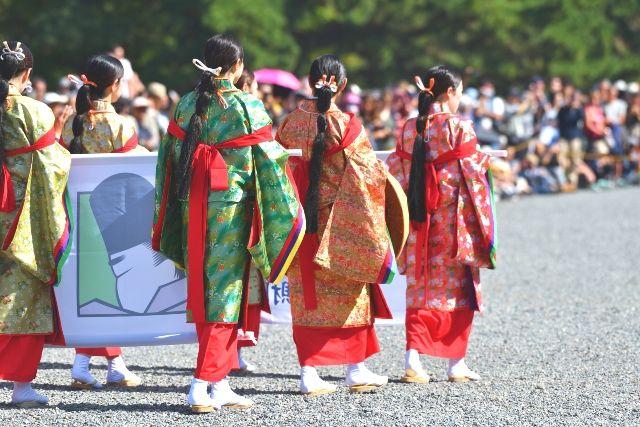
One of the highlights is the accurate restoration of costumes, hairstyles, ritual implements, etc. of each era.
.
Even though they are both women from the Heian period, there are slight differences, such as Sei Shonagon wearing a twelve-layered kimono and Murasaki Shikibu wearing a kouchiki.
Fashion Check
It's also fun to do this.
Highlight of the Jidai Matsuri 2: Women from the Commoners Appear
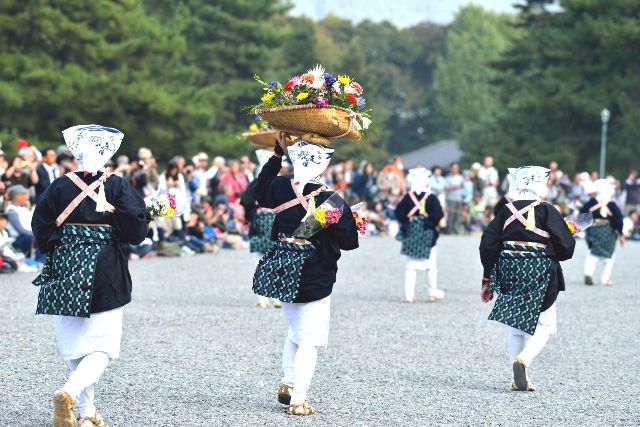 Images Courtesy:
PIXTA
Images Courtesy:
PIXTA
A procession depicting historical customs featuring famous people like Oda Nobunaga and Murasaki Shikibu, some of whom you might find in textbooks.
However, the "
Muromachi Kyoto Customs Procession
" and occupational groups "
Shirakawa Woman (Woman who sold flowers)
" "
Ohara Woman (A woman who went to sell firewood in Kyoto with firewood on her head)
"Ordinary women also appear in the story.
Highlight 3 of the Jidai Matsuri: The Gohoren
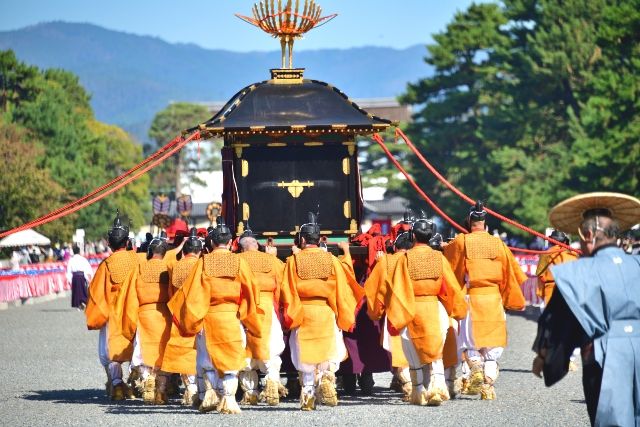
Following the Enryaku period procession was the Shinsen-kosha procession, which offered sacred food and drink to the gods, and the front row of gagaku musicians (people who play gagaku).
Shinto procession
will appear.
The Shinko Procession includes two Imperial Palaces, carrying the divine spirits of Emperor Kanmu and Emperor Komei, the deities enshrined at Heian Shrine.
.
Enjoy the Jidai Festival!
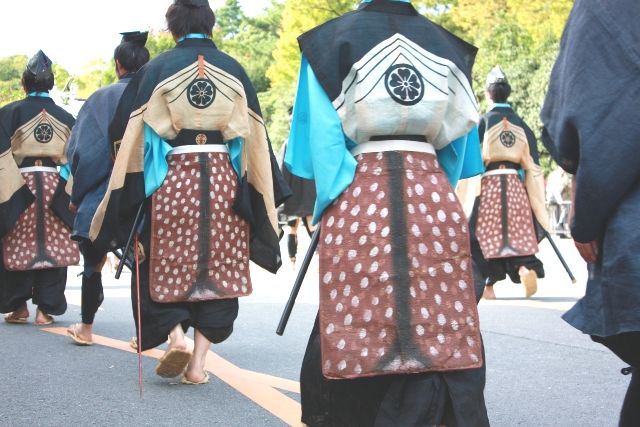
It will be held in Kyoto on October 22nd. Festival of the Ages This is a grand festival with the participation of about 2,000 citizens. is.
The procession of citizens dressed in costumes from each era, from the Meiji Restoration to the Enryaku period, is a spectacular sight!
You can compare hairstyles and clothing from each era, which can be enjoyed by people of all ages.
Read the article to learn more about the festival and enjoy it to the fullest!
*The content of this article is current as of August 2024.
Featured image provided by:
PIXTA


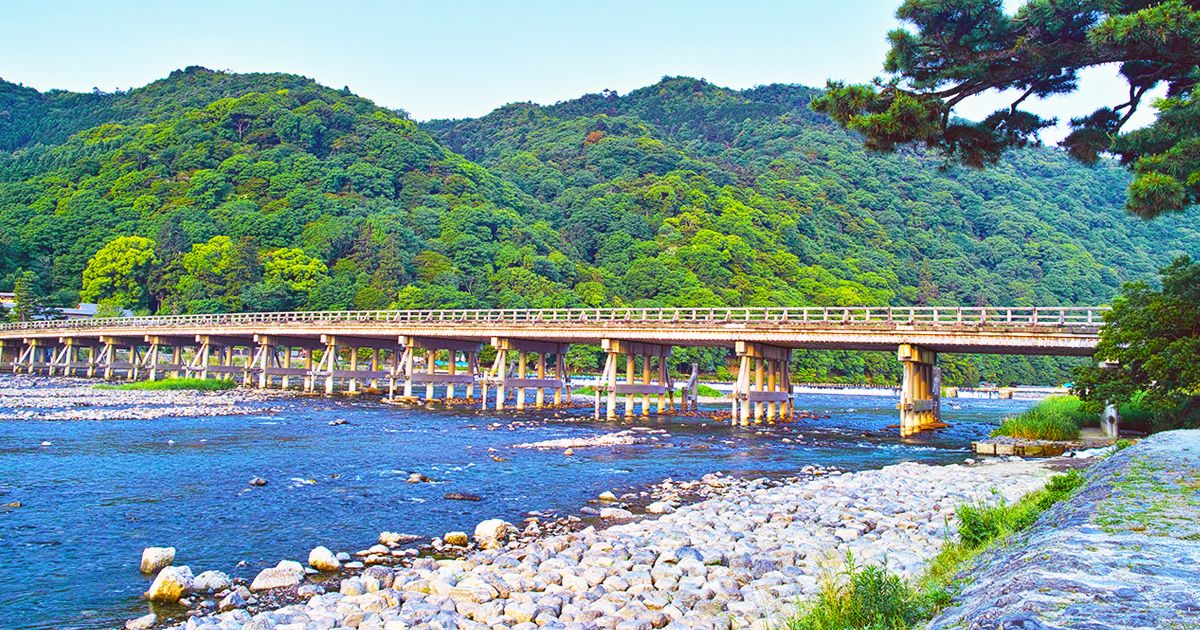
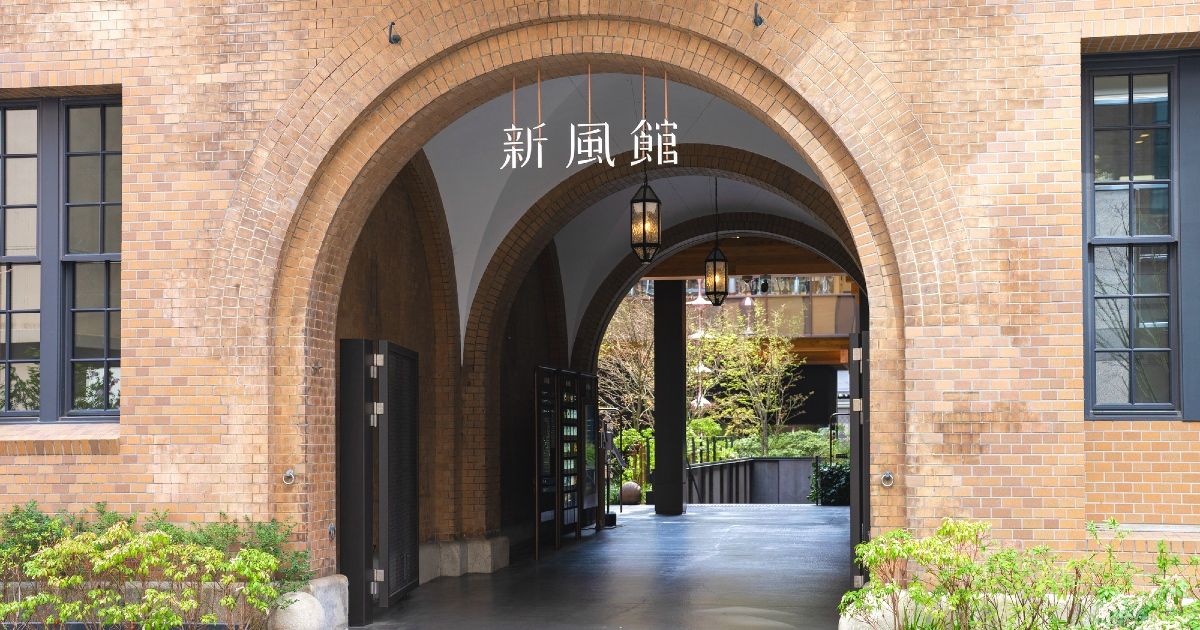

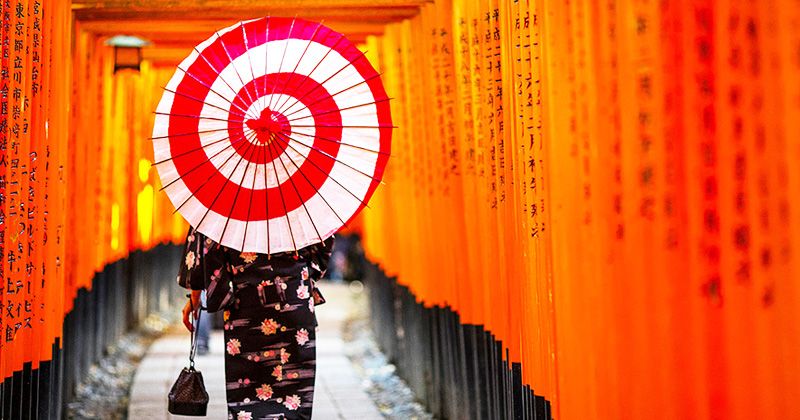
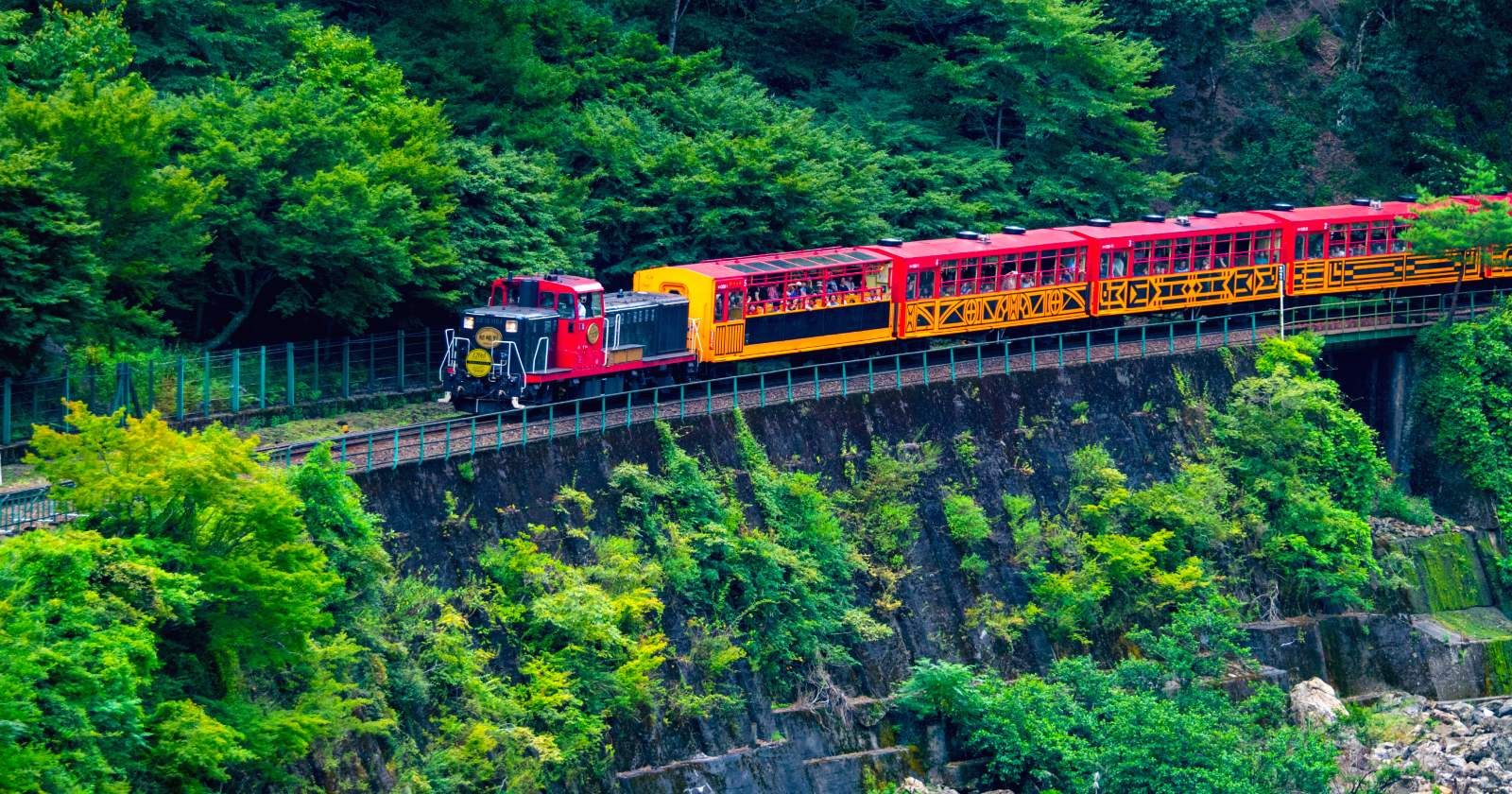
![Popular craft and handicraft experiences in Kyoto [for adults, couples, and children]](https://img.activityjapan.com/wi/kyoto-handcraft-acvitivy_thumb.jpg)

![Recommended plans for old-style house experience facilities [Kanto and Kansai]](https://img.activityjapan.com/wi/old-folk-house_thumb.jpg)
